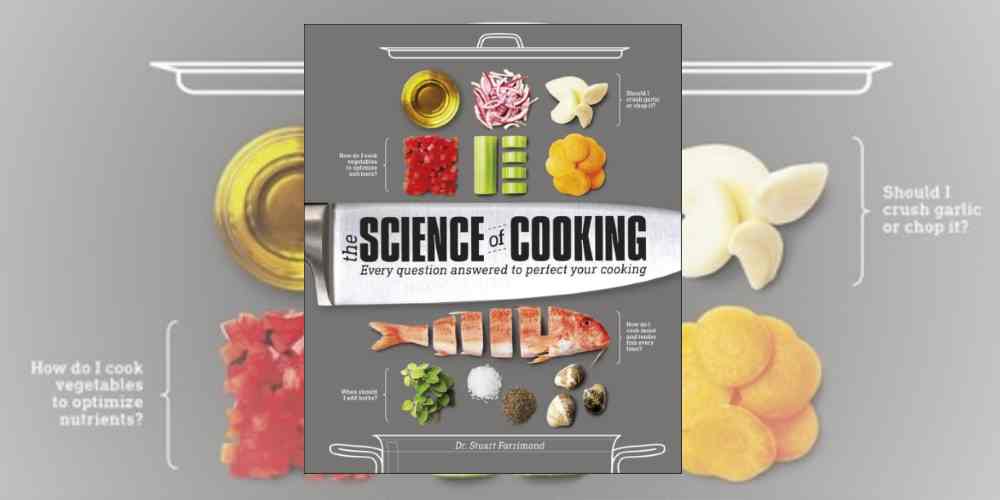This week’s word is “Cooking.”
The Science of Cooking from DK books is a wonderful geeky conjoining. Whilst many may consider cooking an art, there’s no doubt a little scientific application can up your culinary game. If you’re in any doubt, just Google “sous vide.”
With chefs like Heston Blumenthal wowing diners and critics with his scientific approach, and popular shows like The Great British Bake Off forever discussing gluten structures, the time was right for an accessible book on the subject.
And who better to do so that DK? Once again with their trademark great pictures, backed up by impeccable text, they have produced an informative and engaging book, that not only teaches you to cook better but also informs on why things taste like they do, and the chemical and physical processes that underpin your favorite dishes. To give a simple example, it explains why everything tastes like chicken!
The book, written by Dr. Stuart Farrimond, is broken down into several sections, including, “Kitchen Essentials,” “Meat and Poultry,” “Fish and Seafood,” and “Baking and Sweet Things.” It takes in grains, rice, and herbs and spices along the way too. There is, of course, a double page spread devoted to the Scoville Scale.
If you have even a vague interest in cooking and/or science this book is a fascinating read. It’s one of those volumes that you take down to look at one thing, only to find yourself still reading 30 mins later.

What’s in The Science of Cooking?
Here are just a few passing highlights. If I’d looked through the book on a different day, I could have easily chosen a different set of fascinating pages.
- The protein structures of egg and how to scramble it to perfection.
- The science of custard.
- Why it can be a bad idea to reheat rice.
- How alcohol enhances food.
- How to get jam to set properly.
- The process of steaming vegetables.
- Why rare beef is safe to eat but not chicken or pork.
As well as the science of cooking, such as the crystal structure of tempered chocolate, there is lots of information about healthy eating. It analyzes many health claims and looks to see if there is any science to back them up. Which vegetables are better for you eaten raw and which ones should be cooked? Is juicing a good substitute for whole fruit and vegetables? Should you eat probiotic yogurts?
I could go on, but I won’t. There are loads more examples in the video above.
The Science of Cooking is another great book, one that is perfect for geeky chefs. I’m looking forward to trying out many of the ideas outlined on its pages. I’m still, however, not sure there’s room in my kitchen for a sous vide machine!
GeekDad received a copy of The Science of Cooking in order to write this review. If you enjoyed this piece, do check out my other “Word Wednesday” articles.




